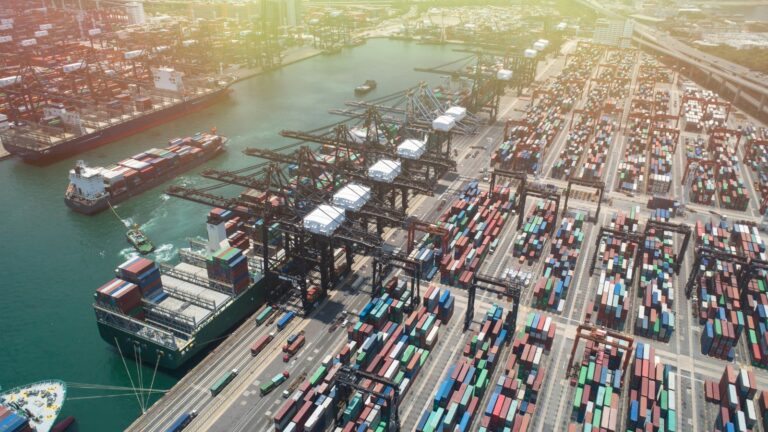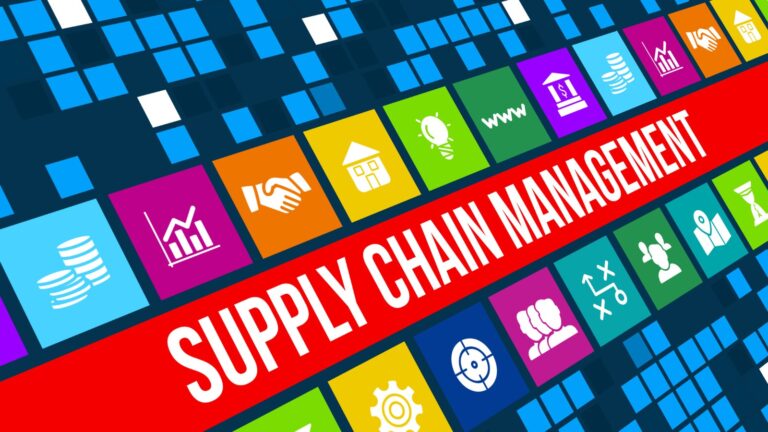Are you also one of the many companies that face extra expenses due to miscommunication in your supply chain? Did you know that 57% of businesses have poor visibility across their supply chain just because they don’t utilise proper technology? That’s where the importance of proper supply chain management comes in. It is a visible fact that companies with effective communication between various stages of it have a high chance of achieving business success.
In today’s article we are going to discuss the ins and outs of the supply chain. We will walk you through its definition functions and the different types as well. The article will act as a guide for you to get a clear idea of the importance of the supply chain to your business.
What Exactly is Supply Chain?

The word “supply chain” refers to a networked system of operations, procedures, and resources employed in the creation, distribution, and delivery of goods and services to clients when it is used in the context of business. It involves several steps, beginning with the acquisition of raw materials or components, continuing through production or manufacture, distribution, and finally culminating in the delivery of the finished product to clients.
So, why do companies need to handle this supply chain process well? The answer is simple. A well-managed supply chain initiative to enhance efficiency, reduce costs, and improve client satisfaction by facilitating seamless coordination between suppliers, manufacturers, logistics providers, and retailers. Planning, observing, and managing the flow of products and information is a key component of effective supply chain management because it helps businesses meet consumer demands, adjust to change, and keep a competitive advantage in the marketplace.
7 Key Functions of Supply Chain

Purchasing
One essential purchasing activity involves buying goods or services to achieve organisational objectives. The assurance of product quality and value, the reduction of inventory costs, the preservation of input flow for continuous output, and the enhancement of competitive positioning are its core goals. The process includes tasks including creating and analysing product needs, handling requisitions, requesting bids, evaluating bids, awarding supply contracts, inspecting acquired goods, and managing storage and release.
As it offers the resources and materials required for product development, this basic function is crucial for any kind of company. Purchasing creates great potential for businesses to succeed in a highly linked world as a result of the rise of the economy.
Purchasing
One essential purchasing activity involves buying goods or services to achieve organisational objectives. The assurance of product quality and value, the reduction of inventory costs, the preservation of input flow for continuous output, and the enhancement of competitive positioning are its core goals. The process includes tasks including creating and analysing product needs, handling requisitions, requesting bids, evaluating bids, awarding supply contracts, inspecting acquired goods, and managing storage and release.
As it offers the resources and materials required for product development, this basic function is crucial for any kind of company. Purchasing creates great potential for businesses to succeed in a highly linked world as a result of the rise of the economy.
Manufacturing
Another function in the whole process of the supply chain is manufacturing. It covers the production of things for use or sale utilising a mix of manpower, equipment, technology, chemical processes, or formulations. This phrase refers to a wide range of human endeavours, from timeless skills to cutting-edge high-tech methods.
On the other hand, it is frequently linked to extensive industrial production, where raw resources are transformed into completed commodities. These final goods could be sold to wholesalers who subsequently distribute them to retailers and, eventually, end-users and customers, or they may be used as components for more complex objects like aeroplanes, home appliances, or vehicles. Manufacturing is essential to the creation and distribution of commodities, boosting economies and satisfying a range of market demands.
Inventory Managing
Inventory management processes must be implemented to use the appropriate number or level of each inventory item. The major objective is to reduce costs while maintaining constant production, sales, and customer service. A company’s current assets may occasionally comprise a considerable amount of inventory and as a result, any mismanagement might cause losses or even financial disaster.
Effective inventory management is critical for manufacturing businesses, both domestically and internationally, because physical inventory is an important company asset and a major contributor to sales. This seamless process is made possible by inventory management, which guarantees that the proper product is always available at the ideal time and place at the ideal cost. In the end, a company’s ability to meet customer demands and make a profit depends on effective inventory management.
Demand Forecasting
Demand is the most crucial factor in the business context. Do you agree with this? This involves the process of predicting customer demand to guide corporate supply chain and business management decisions. It blends non-formal strategies, such as educated guesses, with quantitative approaches, such as statistical tools, analyses of historical sales data, and information from test markets. For capacity analysis, inventory control, and production scheduling, demand forecasting is highly necessary.
It also helps in analysing prospective market entrance choices. Demand forecasting essentially means estimating future demand for goods or services by examining past and present patterns. Businesses could efficiently satisfy consumer demands by optimising processes, ensuring adequate inventory levels, and making well-informed strategic decisions by properly forecasting demand.
Warehousing
It speaks of carrying out administrative and physical activities in connection to the storage of goods and resources. These duties include receiving, identifying, inspecting, verifying, storing, retrieving for issues, and more. The technique of warehousing has substantially changed from being a basic storage operation.
Increasingly, warehouses act as distribution hubs and provide areas for physical product customisation, such as repackaging or labelling, in the age of mass customisation.
These facilities have become more crucial since they are the last stop before reaching clients. A product’s handling, storage, and management must be done correctly to guarantee accurate delivery if client orders are to be filled accurately and on schedule. The strategic component of storage is increasingly crucial for maximising supply chain effectiveness and customer satisfaction.
Transporting
This stage of the supply chain includes the transportation of goods, people, and animals. Air, rail, road, water, cable, pipeline, and space are just a few of the numerous modes that are involved. It may be broken down into three categories such as operations, vehicles, and infrastructure.
Transportation makes it possible for people to exchange products and services, which is necessary for trade and the growth of civilization. As the link that connects a company’s products to its consumers, transportation is essential to the supply chain. Without appropriate transportation, a product cannot get to the consumer on time even if it is in the correct warehouse at the right time. This vital function serves as the backbone linking companies to their global marketplaces and clientele.
Customer Care Servicing
We have come to the final stage of the supply chain. Customer service is the process to make sure a client is happy with a product or service. It typically takes place during transactions, such as purchases or refunds, and may express itself in a variety of ways, including in-person interactions, phone calls, or self-service technology. Although it can seem like the last stage in the supply chain, customer service is not the end of the process.
This function is essential for meeting customer requests and ensuring fast delivery of products or services. Through answering queries, resolving issues, and providing support, customer service is necessary for retaining customer loyalty and building strong relationships with consumers. What is the objective of providing a good service? Exceeding customer expectations is a top objective for any successful company for sure. It also manages order rejections – due to damaged good or customer chang of heart- and transport them back to the warehouse.
3 Main Types of Supply Chain Models

Continuous Model
The name of this model suggests what exactly it refers to. When you are engaging in a manufacturing process, it is important for your company to make sure that your materials continuously flow through the production process. Implementing this model for the supply chain ensures the meeting of the requirements of the high production demand smoothly. One of the main advantages of this model is that it guarantees on-time production. Also, companies do not need to worry about the waste that occurs later to take care of waste reduction.
Fast Model
This is designed with the ability to make decisions swiftly in mind. Companies are able to make certain business decisions smoothly without any delay by employing this model in their oeprationsla strategies. The basic idea to design such a model is to boost the overall corporate performance and the capabilities to be flexible and responsive.
It will be a huge loss when you spend too much time making one decision when the production is happening. Plus, companies utilise this model as a door to maintain their positions in the industry competition and grab chances without wasting time.
Inventory Model
The inventory model for supply chain management employs a methodical approach to managing inventory levels along the whole supply chain. It makes a concerted effort to balance meeting customer demand with cutting holding costs.
Businesses can assess the optimal inventory levels for different supply chain phases by evaluating previous information, demand patterns, and market trends. The inventory model takes factors like lead times, order amounts, and safety stock into account to maintain a continual flow of goods while avoiding stock outs or overstock situations.
Boost the Efficiency of Your Supply Chain with Cutting-Edge Technology

Supply chain management should receive more attention from the business stakeholders as it consists of various aspects which are key to driving the success of overall enterprise procedures. Handling your supply chain might be difficult as each phase has different requirements. The best approach to optimise the supply chain productivity is adopting new-age technology which will assist you in streamlining the whole operation system.





